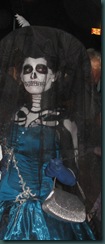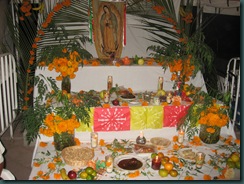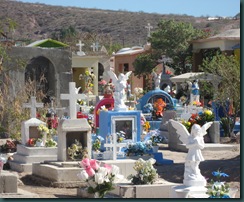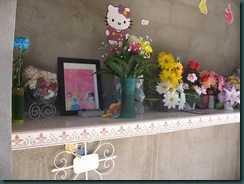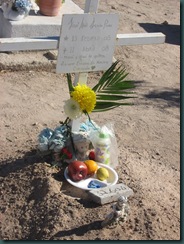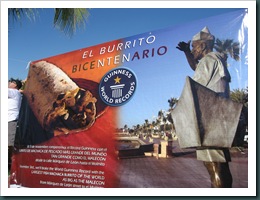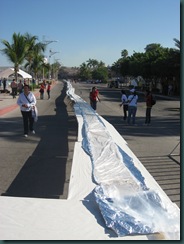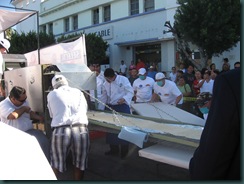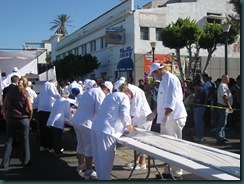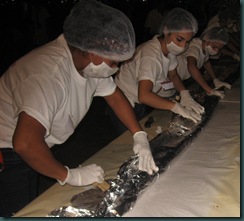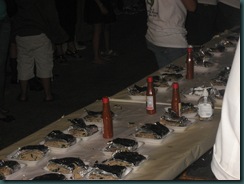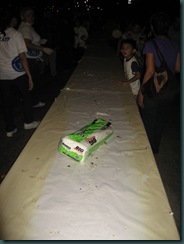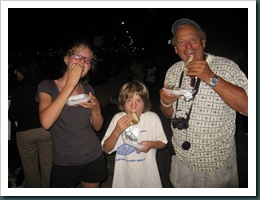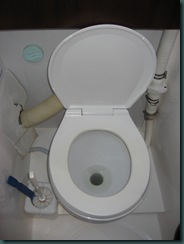 Just before our guests arrive, we send them a document of what to expect living aboard our boat. We do this to prepare them, and also so that they do not get overwhelmed with all the ‘rules’ once aboard. After all, our lifestyle is a bit different than most people’s, even though for us it’s become our normal (although I sure would love a nice long and relaxing bath!).
Just before our guests arrive, we send them a document of what to expect living aboard our boat. We do this to prepare them, and also so that they do not get overwhelmed with all the ‘rules’ once aboard. After all, our lifestyle is a bit different than most people’s, even though for us it’s become our normal (although I sure would love a nice long and relaxing bath!).
Of our ‘rules’, no topic gets more comments from, and creates more anxiety for, our guests than the toilet. No subtopic creates more angst than the dreaded ‘stick’. In fact, our current visitors, who have rented a house while they are here, have sworn to high heaven that they will not be going to the bathroom on the boat. And for the most part, they’ve lived up to their promise. Unfortunately for us, that has meant less time on the boat than we would have otherwise wanted, and only one of their kids has been ‘brave’ enough to sleep over here. We have insisted it’s really no big deal. Other guests have done it. On the other hand, it’s created a lot of laughs.
Here’s what triggers the anxiety, directly from our ‘Welcome Guests’ document (and note particularly item #3):
Toilets: Boat toilets (called “heads”) are very sensitive, and any repairs are very difficult and expensive.
1. NO TOILET PAPER OR ANY FOREIGN ITEMS IN THE HEAD. Throw all toilet paper in the garbage can located under the sink. For very soiled toilet paper, zip lock bags are also provided under the sink. If any toilet paper accidentally gets into the toilet, DO NOT FLUSH – please fish it out with the wood stick beside the head and throw it into the garbage can. Do not throw anything else into the toilets either, including hair, q-tips, cotton balls, etc. These items will damage the macerator, which is similar to the blade in a blender, and repairs can be expensive.
2. To flush, hold down the flush button until you see the water becoming clear again. If it takes more than 10 seconds, stop, wait a few seconds, and try again. If it is not flushing, let us know. Any waste left in the toilet begins to smell quickly, especially since it is mixed with the salt water used by the toilets. With each flush, pour about a tablespoon of vinegar into the toilet (vinegar is located in each bathroom), which helps with the smell as well as to keep the toilet bowl and pipes clean.
3. If your ‘poop’ is too large or hard to go down, use one of the wooden sticks to break it up before you flush, then use a baby wipe (located in each bathroom) to wipe off the stick. Replace the stick in the plastic zip lock bag and throw the wipe in the garbage can.
4. The tanks hold only 15 gallons of water. Once full, you will hear the toilet’s overflow spilling into the water after you’ve finished flushing. Let us know right away if this happens.
5. If there are ANY problems at all, please let us know right away.
6. Our rule: you dirty the toilet, you clean it – cleaning supplies are located in each bathroom.
7. Unless we are underway in heavy seas, keep your bathroom hatch (window) open to ventilate your bathroom.
8. When we are at a dock, please use the bathrooms on shore whenever possible.
The wooden stick happens to be one of those paint store sticks used to stir paint. For the first time, my brother-in-law Paul questioned why these sticks were not disposable. I had to think. Well, we have three bathrooms, so that makes for a lot of sticks. On the other hand, not every poop, nor everyone’s poop, requires stick assistance. Perhaps we should be writing our names on the stick so that you only have to touch your own sh-t-stick? In fact, that is the reality given that each of my kids has his/her own bathroom, and between Michael and I, only one of us (and I won’t say who) ever requires the use of the stick (as a result of having borne children). We’ve never had a problem with the re-use of the stick. After all, this trip is partially about leaving a smaller footprint on this planet. It’s the second R in the triple R’s to save our world. But what of our guests? Paul has a point. Do guests want to be sharing our sh-t-sticks? I certainly wouldn’t, even if they are family.
This week, we’ve gone out to a paint store here in Huatulco and acquired new sh-t-sticks, and these are even plastic!! Not great for the environment, but more hygienic for guests. And we don’t want to scare any more of them off.
Some other interesting notes about the toilets: Not only do we put vinegar into the toilets with each flush to help with the smell and to keep the bowl clean (someone told me she uses Polident to keep her porcelain bowl clean – cruisers are so resourceful!) but about once a week we pour a couple of tablespoons of oil down there as well. This helps keep the mechanism working well. It’ll make you think twice next time you ask for that oil and vinegar dressing on your salad, no?
When the toilet’s holding tank reaches its maximum of 15 gallons and overflows into the water, we have to stop using that head as it is illegal to dump waste into the marina waters, and it’s just plain rude to do so in a beautiful anchorage. This is why when we are in a marina, we use the bathrooms on shore as much as possible, as this gives the holding tanks a longer life. In the States and Canada, there are services that come and suck out the waste from the holding tanks, and there are pump out stations as well. However, these are unheard of here in Mexico (and I understand in the rest of the world). So the only option for getting rid of waste is to dump it by opening the valves to the holding tanks when you are at least three miles off-shore. The kids have a great time watching the water as we are underway off-shore and empty the tanks. I for one am completely grossed out by it.
We have never held our guests to the “You dirty it, you clean it” rule. However, I am proud to say that both my children clean their own toilets, a skill that will come in handy one day I am sure.
And we have had our share of head breakdowns. Like when the macerator in one of the heads was making weird noises, like it was chewing up sand. We think some barnacles got up into the through-holes and were gradually degrading the macerator. Michael decided to take apart the whole thing, including the plumbing tubes leading into the holding tank. The resulting shower was not pretty. Or the time Harrison dropped a tiny piece of Lego down his toilet and Michael had to fish it out using one of his McGyver methods. Since then, we’ve been talking about adding No Lego Playing While On The Toilet to our rule list.
-Barb
Signing off from Marina Chahue, Huatulco, Oaxaca

 Its Hard on the Hard. Last week we hauled our boat to have the bottom painted. Living on land on a boat is not all its cracked up to be: the dirt, climbing a 7 foot ladder to get aboard, needing to use ice to keep the fridge working (since it can’t pump sea water into the cooling system), etc.
Its Hard on the Hard. Last week we hauled our boat to have the bottom painted. Living on land on a boat is not all its cracked up to be: the dirt, climbing a 7 foot ladder to get aboard, needing to use ice to keep the fridge working (since it can’t pump sea water into the cooling system), etc.  The boat yard uses a rail car to which the boat gets tied at its four corners and then propped up using sometimes nothing more
The boat yard uses a rail car to which the boat gets tied at its four corners and then propped up using sometimes nothing more  than a pile of plywood to support the rest of the boat which is more or less resting on its keels. Divers are sent under the boat to make sure it's all secure.
than a pile of plywood to support the rest of the boat which is more or less resting on its keels. Divers are sent under the boat to make sure it's all secure. 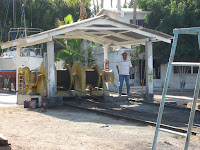 A large cable operated by a massive motor is used to then pull the car from the water onto dry land, or “the Hard”. As odd as this whole mechanism sounds, it was pretty painless, especially as compared to the other option which is to have your boat hoisted up onto a sling. In that case, you worry about the sling breaking and the nightmares that can cause! For us, it got even more exciting when the workers had to hoist the boat up a couple more inches using an hydraulic hoist to paint the bottom of the keels upon which the entire boat was sitting.
A large cable operated by a massive motor is used to then pull the car from the water onto dry land, or “the Hard”. As odd as this whole mechanism sounds, it was pretty painless, especially as compared to the other option which is to have your boat hoisted up onto a sling. In that case, you worry about the sling breaking and the nightmares that can cause! For us, it got even more exciting when the workers had to hoist the boat up a couple more inches using an hydraulic hoist to paint the bottom of the keels upon which the entire boat was sitting.







